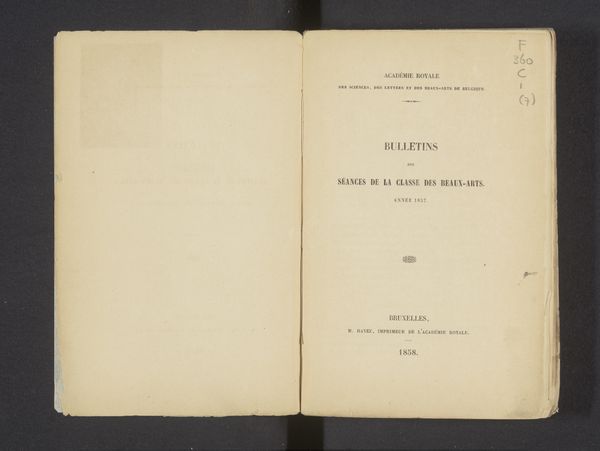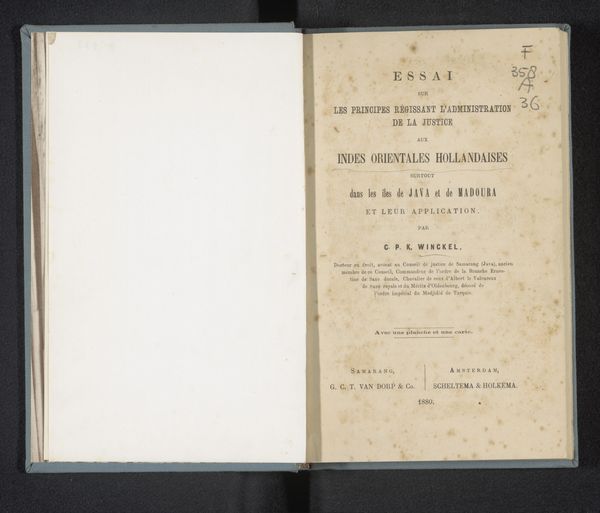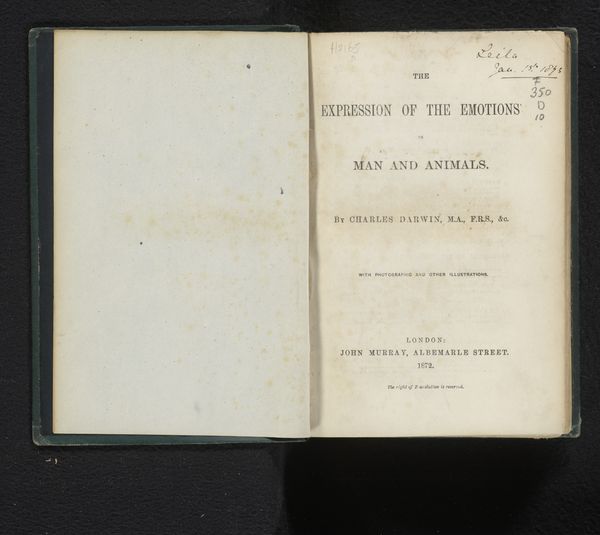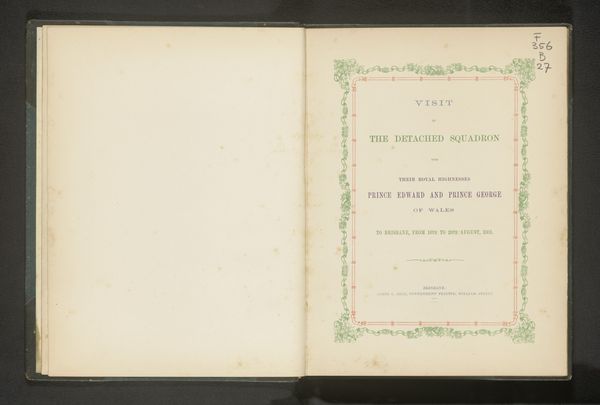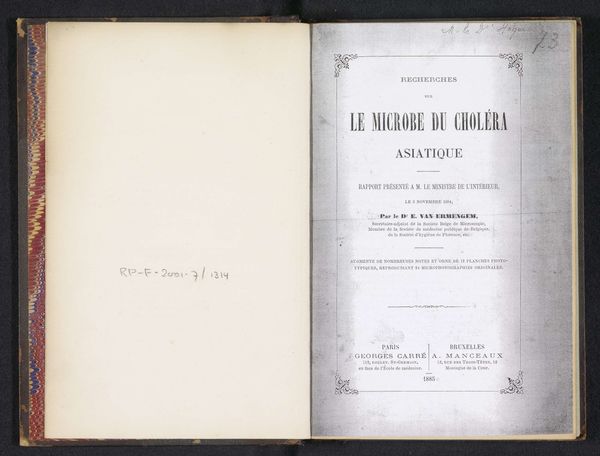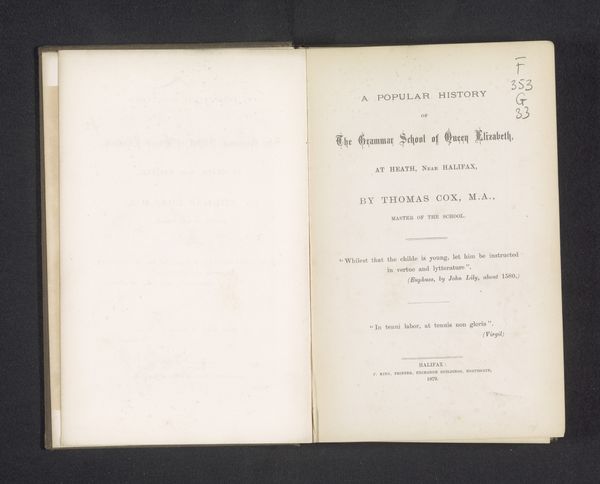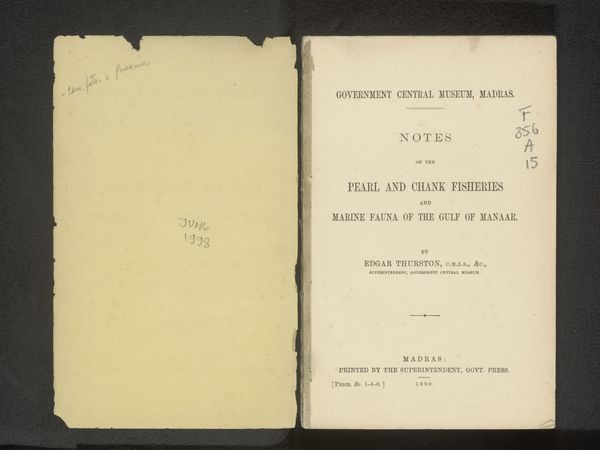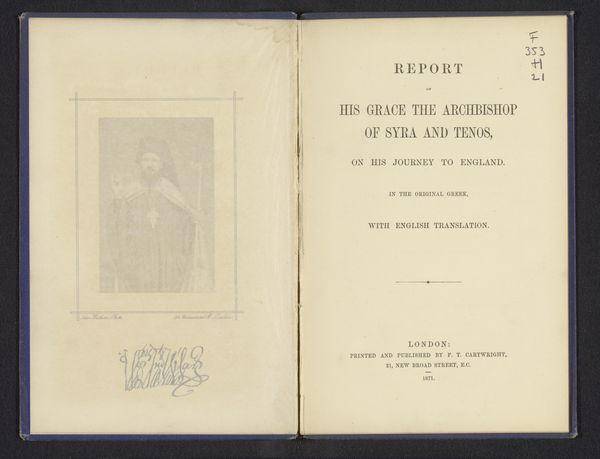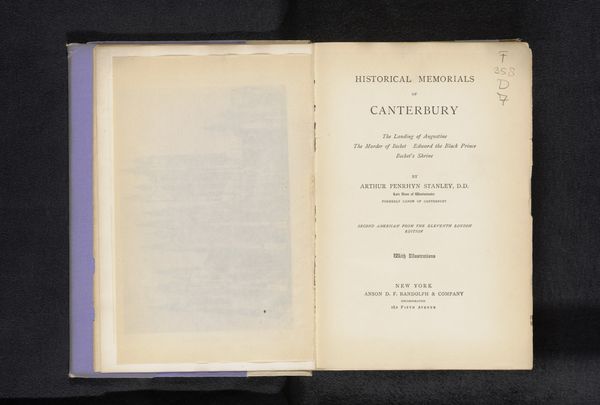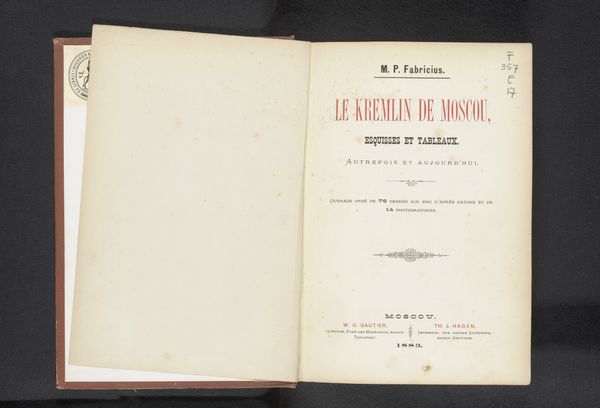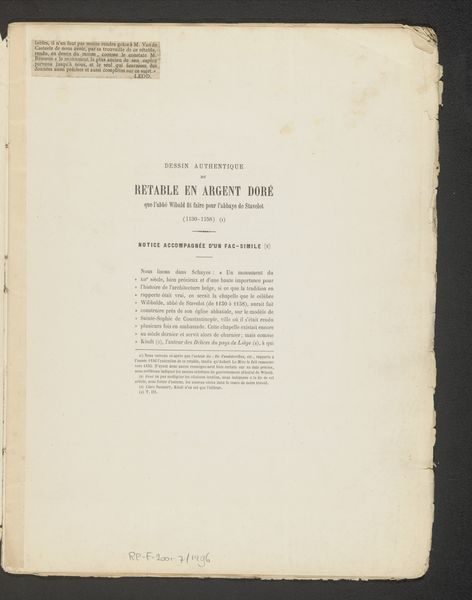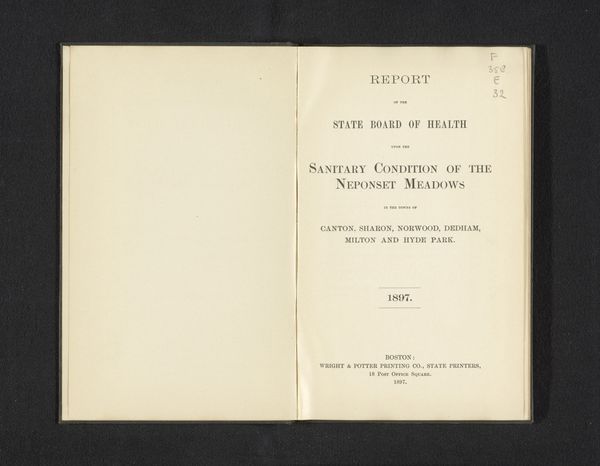
A history of Madison, the capital of Wisconsin; including the four lake country to July, 1874 : with an appendix of notes on Dane county and its town 1874
0:00
0:00
print, paper, typography
# print
#
book
#
paper
#
text
#
typography
Dimensions: height 231 mm, width 160 mm, thickness 33 mm
Copyright: Rijks Museum: Open Domain
Editor: This is "A history of Madison, the capital of Wisconsin; including the four lake country to July, 1874" by Daniel S. Durrie, published in 1874. It's fascinating to see an artifact like this; you can almost smell the old paper. What strikes me is the simplicity of the typography, its almost utilitarian design. What catches your eye about this book? Curator: From a materialist perspective, this isn't just a book, but evidence of nineteenth-century labor and industry. The paper itself, its production process, the ink, even the binding; all speak to the social and economic conditions of the time. How were these materials sourced, processed, and assembled? Understanding the labour behind each stage reveals a complex network of material culture. Editor: So you're less interested in the *content* of the history, and more in how the book *as an object* came to be? Curator: Exactly. Consider the printer's choices: the typeface, the layout, even the quality of the paper. These decisions weren't arbitrary. They reflect prevailing tastes and economic realities. The book becomes a commodity, a physical manifestation of knowledge distributed through specific means. And let’s not forget about its intended audience. Who was this book made *for*? What can the book itself tell us about literacy and class at the time? Editor: That's a really different way of looking at it! I hadn't considered the economic side so deeply. So instead of analyzing the historical narrative, you analyze the history of the *book itself* as a material object. Curator: Precisely. Its creation and consumption reveal a great deal about Madison, Wisconsin, in 1874. Material analysis transforms a simple book into a rich source of historical information. Editor: I’ll never look at an old book the same way again! It makes me think about the environmental impacts and material supply chain even for the books of today! Curator: Glad to offer that viewpoint. It's about seeing the world through the lens of production and consumption.
Comments
No comments
Be the first to comment and join the conversation on the ultimate creative platform.


